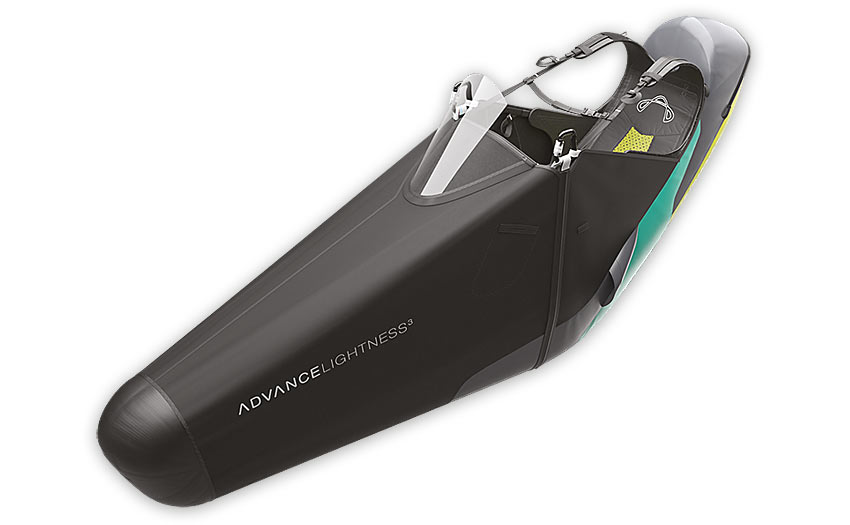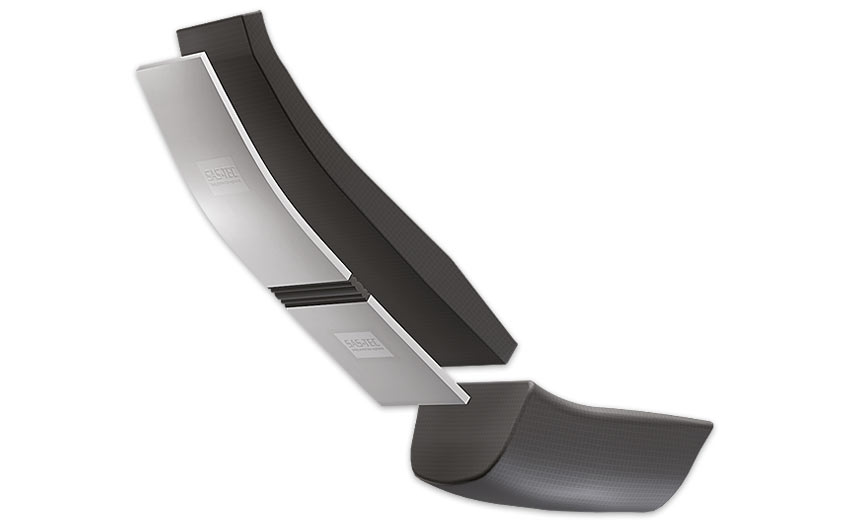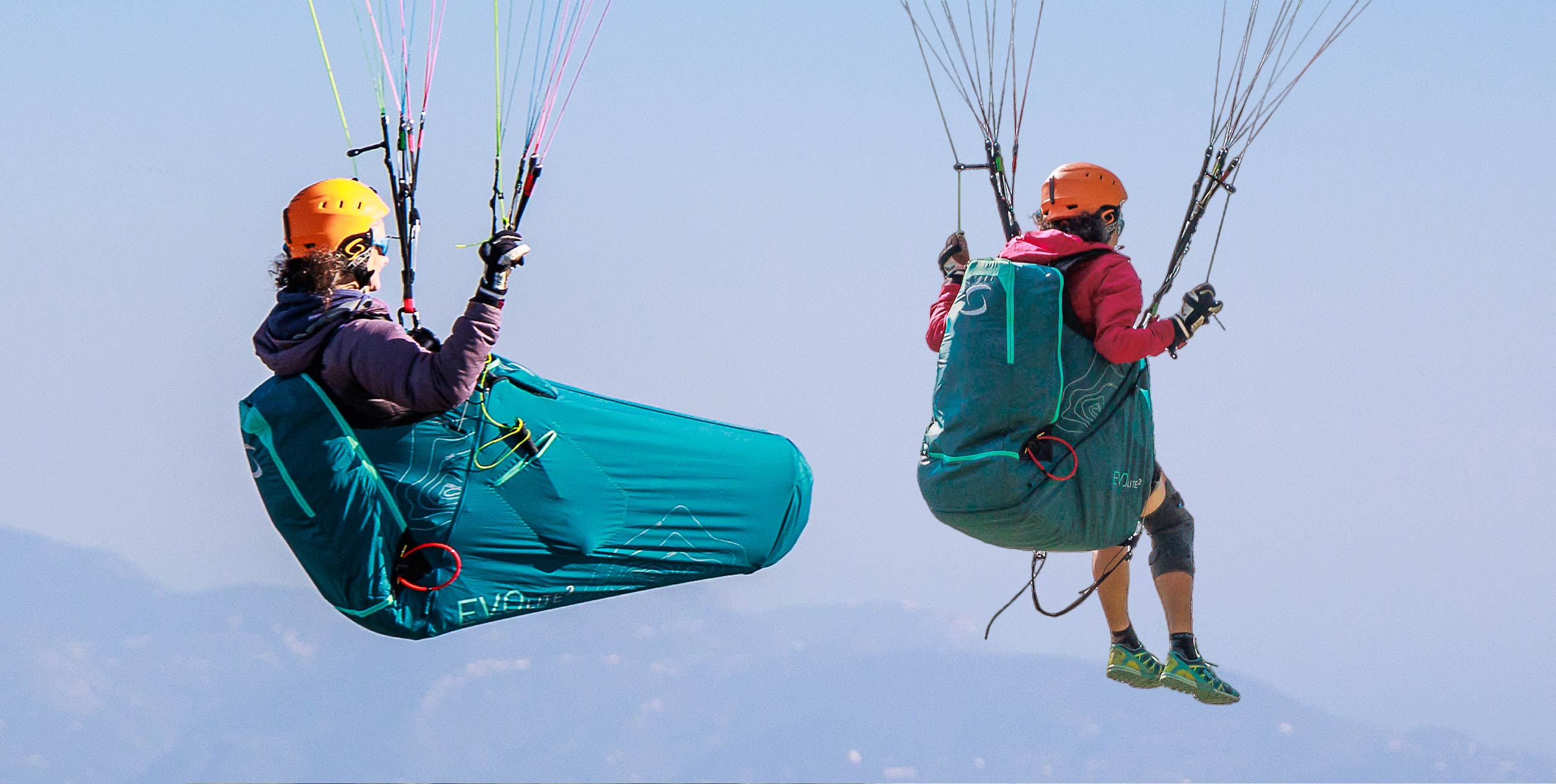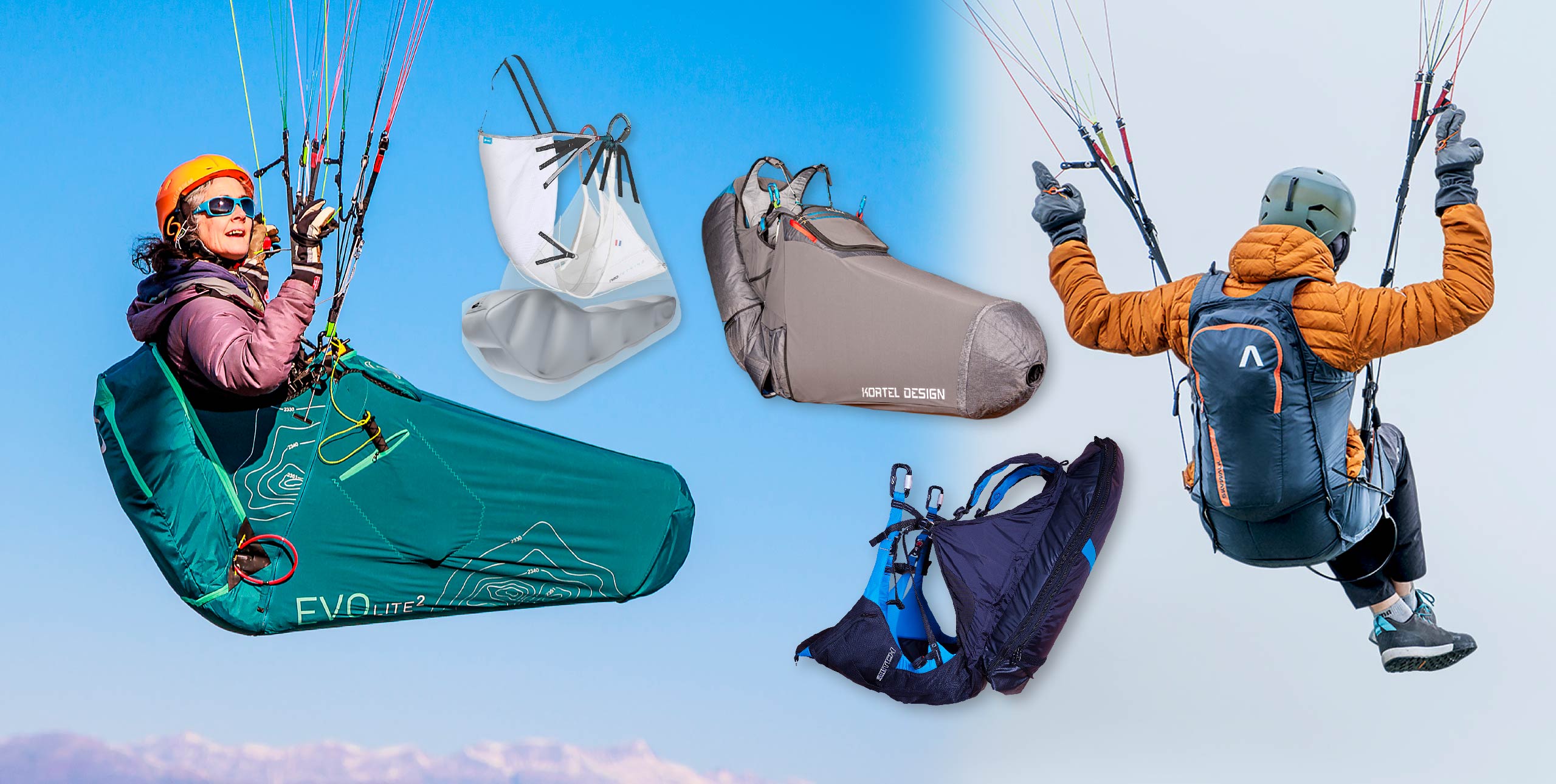
How do you improve on a classic? And does the windshield really work? By Hugh Miller
Since the 2010 original Lightness and the revolutionary Impress 3, Advance have been consistently getting their harnesses right. For simplicity, quality and comfort the Swiss brand is my favourite. I flew the Lightness 2 for 12 months in 2015, and loved it.
Advance never released a follow-up to the heavier Impress 3, and the Lightness line took over as the all-rounder performance design. Though at first glance the Lightness 3 looks almost identical – it’s a semi-light design, 90% of the materials are the same, and the basic geometry and shape are very similar – this is a fairly substantial upgrade. Here are the big changes.

The windshield
It works! I’d expected to either be totally cocooned behind it, or have wind buffeting my face with lulls in between. Instead, in flight you get perhaps 50% of the airflow hitting your face than you do without it – the air is diverted up and around the windshield, so there’s a gentle constant laminar flow. The top of the windshield sits just below the horizon, but there’s no substantial alteration to the field of view.
The flying position
Hangpoints are 4cm higher than on the Lightness 2, so conversely you feel lower in the harness. Coming from my low-slung competition Kannibal Race 2, I didn’t notice much difference. You feel substantially lower and more snug and cocooned by the Lightness 3 than you do on the Woody Valley GTO Light, and the Supair Delight 2: you’re low enough to be able to see all the way to your shins. This is no doubt good for aerodynamics, but more importantly, it creates a more stable platform than the Lightness 2.
I used to fly the Lightness 2 with my Ozone R11 and the feedback was just insane – I got bounced about so much that paragliding often felt like kayaking down a whitewater rapid. That’s an extreme example of a bad harness-glider combination, and you won’t want to race a two-liner with a Lightness 3, but for three-line D wing flying the extra seat depth will help balance out roll and stabilise the wing across the span on fast glides, along with the slightly more triangulated cross-bracing.
Comfort
As I mentioned, I have always loved Advance harnesses. The original commercial designers of seatplate-less pod harnesses, Advance continue to get it spot on in terms of comfort and geometry. My one complaint with the Lightness 2 was the slightly small footplate – the M was too small for my size 45 shoes, but the Lightness 3 plate feels fractionally bigger. Designer Patrick Bieri told me they have reshaped it slightly which has optimised the pod shape, too.

Protection
The new harness includes a hard-shell SAS-Tec back panel, which adds an excellent upgrade in back protection. This, plus the standard speedbag and windshield adds only 500g of weight over the light speedbag: it’s definitely worth going for this heavier combo if you are going to use the L3 as your everyday harness. At 3.5kg for the medium, it’s totally acceptable. And it is an everyday harness in terms of its useful standard features, with pee tube exit, drink tube entry, side pockets and under-seat five-litre ballast capability.
But… and for me it is a big but… still no fairing! Advance swear that the tiny inflating neck fairing streamlines the dead air behind your head, but why not make it bigger? They can’t make the full-fairing GTO Light fast enough over in Italy at the moment, and I’m surprised by Advance’s decision to forego this feature.
The harness comes with its own glider compress bag, which did a good job of halving the bulk of my standard-cloth Queen 2. I would go for a larger-than-standard Lightpack 3 though. The 83-litre version that came with my harness isn’t big enough for everyday use, unless you enjoy fighting with your bag. I could fit my wing, harness and full-face helmet inside, but it was a tight squeeze. Go for the next size up bag from the harness you’re ordering.
Competitors
I guess the Lightness 3’s biggest competitor is Supair’s Delight 3 (3.7 kg), which we also love. The Delight 3 is a slightly heavier, seatboard design with more storage in the rear pocket, similar in stability. When my colleague Marcus flew this design with the new Step he found the overall package way more solid and secure than with his hammock-design. I would definitely suggest trying both to see which is a better fit for your body shape and flying style.
The lighter Ozone Ozium 2 could also be a contender, but for me, the fiddly hook-in loops and stripped-down, lower comfort levels takes it out as an option for an everyday harness for me – it’s too specialist.
The GTO Light is a slightly more delicate piece of kit, given our experience with our review harness since June 2018, but does offer a performance advantage with its fairing.
Conclusion
The Lightness 3 is an extremely high-quality harness that you could argue is either understated in its looks, or perhaps out-dated. I am slightly disappointed that there hasn’t been a bigger change to the overall aerodynamics of the harness (though the lower flying position is a bonus). That said, the windshield is more than a gimmick – it works brilliantly.
That, plus the added back protection, unrivalled in-air comfort and improved stability in the rough stuff are enough for Lightness 2 owners to seriously consider the upgrade, and for many more pilots to put on the ‘must-try’ list for an everyday semi-light harness.
Q&A: Patrick Bieri, Advance Designer
The windshield works well, but could it pose additional dangers in terms of lacerations?
We’ve designed it so the windshield releases quickly on pressure. If the pilot should fall on the windshield, the corners pop out. During our tests, the windshield never posed a problem. It doesn’t mean it’s impossible, but multiple bad factors would have to come together.
What do the higher hangpoints do?
Apart from increasing the roll stability it also changes the angle of the bracing, which gives this better feeling of the L3. Sitting ‘deeper’ in the harness helps with that feeling too, and the higher hangpoints also increase the comfort in the back support.
Are the main materials 90% the same as the Lightness 2?
Yes. Only the outer cover has changed. The lower fabric is a bit tougher while the upper part is lighter.
Why didn’t you go for a longer rear fairing, like the GTO Light?
The Lightness 2 is still really popular. We think most pilots trust in simplicity and clarity. So from this point of view, a big fairing was never a theme during the development. At the moment we think that a longer fairing will be a better feature for the Impress 4 than for the Lightness series.
Originally reviewed in Cross Country Magazine issue 198 April 2019
To stay up to date and read our reviews first, subscribe to Cross Country










